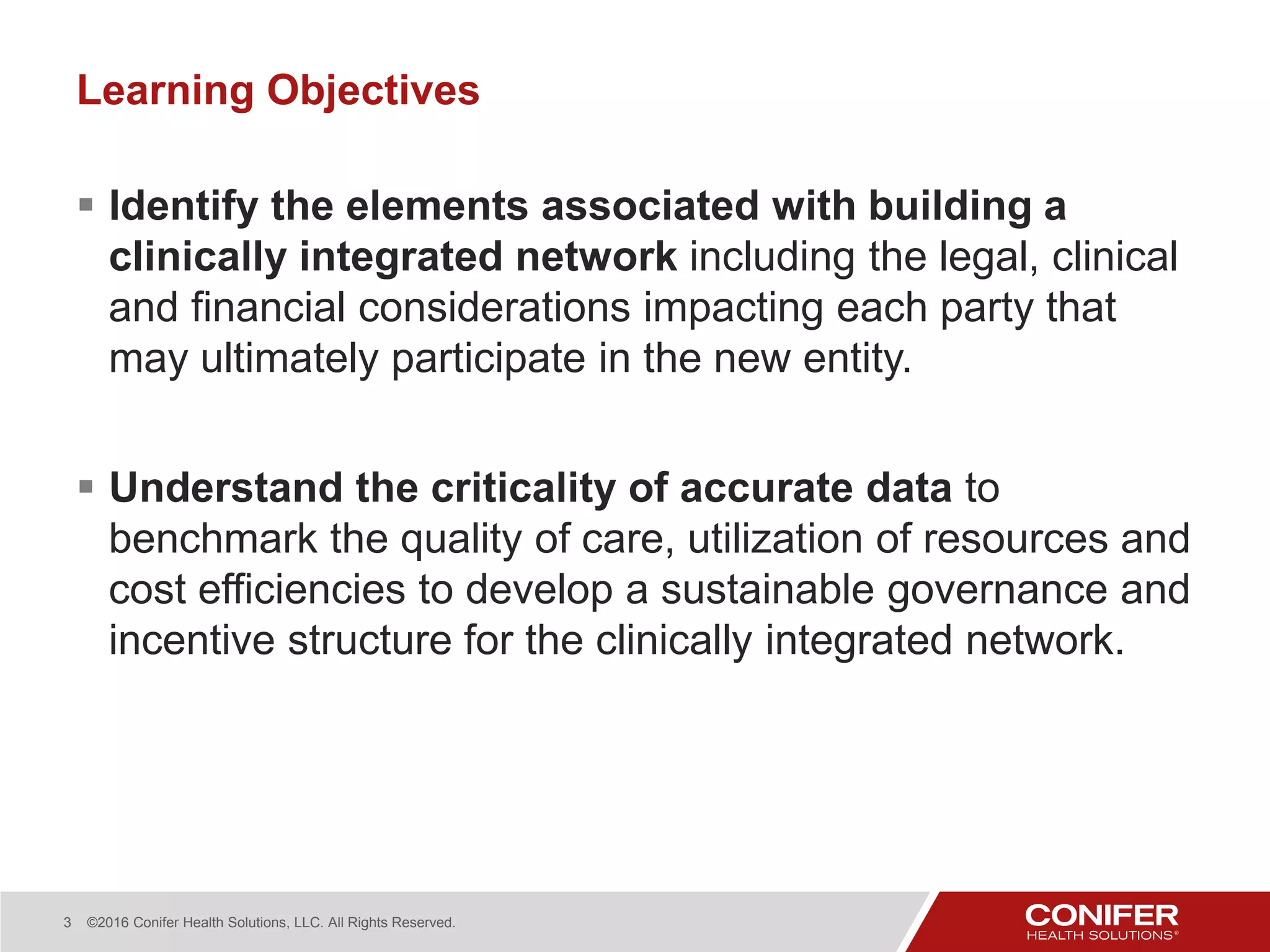The document outlines a seven-step approach to building a clinically integrated network (CIN). The steps include: 1) gathering interested stakeholders; 2) creating a value proposition; 3) developing governance and participation agreements; 4) selecting quality measures; 5) recruiting physicians; 6) measuring and improving programs; and 7) engaging payers. The goal is to improve access, health outcomes, and value through clinical integration and care coordination across providers.




















